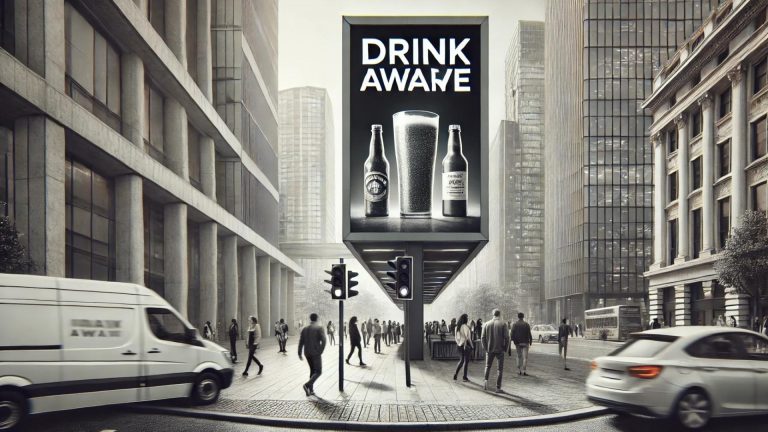Introduction: Alcohol and Youth
Alcohol use among adolescents and young adults is a topic of significant concern and interest. Imagine a group of teenagers at a party, eager to fit in and assert their independence, reaching for their first drink. This moment is more than just a sip; it’s a step into a complex world influenced by peer pressure, curiosity, and the desire to explore boundaries. It’s crucial to understand why this early exposure to alcohol happens and its potential long-term effects.
Teenage years are a critical period of development, where experimentation and risk-taking are common. Many teens are introduced to alcohol in social settings, influenced by friends and the desire to fit in. This early exposure can shape their attitudes and behaviors towards alcohol, often carrying into adulthood. Recognizing these patterns is essential for parents, educators, and policymakers to develop effective prevention strategies.
In this article, we will delve into the factors driving alcohol use among adolescents and young adults. We will explore the roles of peer pressure, media influence, and psychological development in shaping drinking habits. By understanding these influences, we can better address the challenges and support healthier choices for our youth. Join us as we unravel the complexities of alcohol use during these formative years.
Table of Content
- Introduction: Alcohol and Youth
- Social Influences on Teenage Drinking
- Psychological Factors
- Environmental Factors
- Legal and Ethical Considerations
- Short-Term and Long-Term Consequences
- Prevention and Intervention Strategies
- Supporting Adolescents
- Conclusion: Reflecting on Teen Alcohol Use
- FAQs About Teen Alcohol Use
Social Influences on Teenage Drinking
Peer Pressure and Social Acceptance
Peer pressure is a powerful force in teenage drinking behavior. Teens are often influenced by their peers to engage in activities that they might otherwise avoid, including drinking alcohol. The desire to fit in and be accepted can lead adolescents to conform to group norms, even when those norms involve risky behaviors like binge drinking. This social acceptance is critical during the teenage years, as peer relationships become increasingly important.
The impact of peer dynamics on drinking can create a cycle of reinforcement. When teens see their friends drinking, they may feel compelled to join in to avoid feeling left out. This behavior is often reinforced by the perception that drinking is a normal and acceptable activity within their social circle. Understanding the role of peer pressure in teenage drinking is essential for developing effective prevention and intervention strategies.
Role of Social Media and Pop Culture
Social media and pop culture also play significant roles in shaping teenage drinking behaviors. Platforms like Instagram, TikTok, and Snapchat often glamorize alcohol consumption, portraying it as a fun and desirable activity. Influencers and celebrities frequently share images and videos of themselves drinking, creating an aspirational lifestyle that many teens want to emulate. This constant exposure can normalize alcohol use and encourage teens to drink to fit in with perceived societal norms.
Moreover, pop culture, including movies, TV shows, and music, often depicts drinking as a central component of social life. These portrayals can make alcohol seem like a necessary element for having fun and being socially accepted. The influence of media and pop culture on teenage drinking highlights the need for critical media literacy and awareness programs to help teens navigate these messages and make healthier choices.

Psychological Factors of Drinking
Curiosity and the Desire for Independence
Curiosity and the desire for independence are key psychological factors driving teenage alcohol use. Adolescents are naturally curious and eager to explore new experiences, including drinking. This curiosity is often fueled by the allure of adult behaviors and the perception that drinking is a rite of passage. Trying alcohol can be seen as a way to assert independence and break away from parental control.
This quest for autonomy can lead teens to experiment with alcohol despite knowing the risks. The desire to make independent choices and experience new sensations can overshadow the potential consequences of drinking. Understanding this drive for independence is crucial for developing approaches that address the underlying motivations for teenage drinking and promote healthier ways to explore autonomy.
Stress, Anxiety, and Emotional Coping
Stress, anxiety, and emotional coping are significant factors in teenage alcohol use. Adolescents face various stressors, including academic pressure, social challenges, and family issues. Some teens turn to alcohol as a coping mechanism to manage these emotional challenges. The temporary relief provided by alcohol can seem appealing, offering a way to escape or numb negative feelings.
However, using alcohol to cope with stress and anxiety can lead to a cycle of dependency. As teens continue to rely on alcohol for emotional relief, they may develop unhealthy drinking habits that persist into adulthood. Addressing the root causes of stress and providing healthier coping strategies are essential for preventing alcohol use as a means of emotional escape. Encouraging open communication and offering support can help teens find more constructive ways to manage their emotions.
Related Article: The Journey Begins: Understanding Why People Start Drinking
Environmental Factors involved in Drinking
Family Dynamics and Home Environment
Family dynamics and the home environment play crucial roles in influencing teen drinking behaviors. Parental attitudes towards alcohol significantly impact how adolescents perceive and engage with drinking. If parents model responsible drinking behaviors and maintain open communication about alcohol, teens are more likely to adopt similar attitudes. Conversely, if parents frequently consume alcohol or have a permissive attitude towards underage drinking, teens may view drinking as acceptable and risk-free.
The overall family environment, including the presence of stress, conflict, or neglect, can also affect teenage drinking habits. Adolescents in unstable or unsupportive home environments may turn to alcohol as a coping mechanism or escape. On the other hand, a nurturing and supportive family atmosphere can provide the emotional stability that discourages the use of alcohol as a solution to problems.
Community and School Environment
The community and school environment are also influential in shaping teen drinking habits. Schools that actively promote health education and have strict policies against underage drinking can help deter alcohol use among students. Extracurricular activities and programs that engage teens in positive and fulfilling pursuits provide alternatives to drinking. A supportive school environment can foster resilience and a sense of belonging, reducing the appeal of alcohol.
Communities with strong social networks and resources for youth also play a protective role. Community centers, sports leagues, and youth organizations can offer safe and structured environments where teens can socialize without the presence of alcohol. Conversely, communities with high alcohol availability and lax attitudes towards underage drinking may inadvertently encourage teens to drink. Building supportive community networks and providing accessible, alcohol-free activities are essential for promoting healthy behaviors among adolescents.

Legal and Ethical Considerations
Underage Drinking Laws and Enforcement
Underage drinking laws are designed to protect adolescents from the harmful effects of alcohol. These legal restrictions set the minimum drinking age and outline penalties for violations. Effective enforcement of these laws is crucial for deterring underage drinking. This includes regular checks at retail outlets, stringent penalties for those who supply alcohol to minors, and public awareness campaigns about the legal consequences of underage drinking.
However, enforcement alone is not enough. Education about the reasons behind these laws and their importance in safeguarding health and development is equally vital. When teens understand the rationale for legal restrictions, they are more likely to comply voluntarily. Comprehensive strategies that combine enforcement with education can significantly reduce underage drinking rates.
Ethical Implications of Underage Drinking
The ethical implications of underage drinking revolve around the moral responsibilities of individuals and society in protecting youth. Allowing or ignoring underage drinking raises ethical concerns about the potential harm to adolescents’ health and well-being. Adults, including parents and community leaders, have a moral obligation to set positive examples and discourage behaviors that could lead to harm.
Moreover, ethical considerations extend to how society addresses and supports teens struggling with alcohol use. Instead of punitive measures alone, there should be an emphasis on providing help and rehabilitation for young individuals. Balancing legal enforcement with compassionate support respects the dignity and potential of every adolescent, encouraging them towards healthier choices and lifestyles.
Short-Term and Long-Term Consequences
Immediate Health and Safety Risks
Underage drinking poses significant immediate health and safety risks. Acute dangers include alcohol poisoning, which can be fatal if not promptly treated. Teens who consume large quantities of alcohol in a short period are at high risk of overdose, leading to unconsciousness, respiratory failure, or even death. Additionally, alcohol impairs judgment and coordination, increasing the likelihood of accidents and injuries. Car accidents, falls, and risky behaviors are common among intoxicated teens, often resulting in severe consequences.
Furthermore, drinking lowers inhibitions, which can lead to dangerous situations such as unprotected sex, exposure to sexually transmitted infections, and unintended pregnancies. The combination of impaired judgment and peer pressure can push teens into compromising situations that have lasting repercussions. Immediate intervention and education about these risks are crucial in mitigating the dangers associated with underage drinking.
Long-Term Impact on Health and Development
The long-term impact of early alcohol use on physical and mental health is profound. Regular alcohol consumption during adolescence can interfere with brain development, leading to cognitive impairments and learning difficulties. The adolescent brain is still maturing, and alcohol can disrupt this process, affecting areas responsible for decision-making, memory, and impulse control. These changes can result in lasting deficits in cognitive functions and academic performance.
Chronic drinking in youth is also linked to an increased risk of developing alcohol dependence later in life. Early exposure to alcohol can establish patterns of heavy drinking that persist into adulthood, contributing to various health issues such as liver disease, cardiovascular problems, and mental health disorders. Recognizing these long-term consequences underscores the importance of preventive measures and early interventions to protect the health and development of adolescents.

Prevention and Intervention Strategies
Educational Programs and Awareness Campaigns
Educational programs and awareness campaigns are essential tools for preventing underage drinking. Schools can implement comprehensive health education curricula that highlight the risks of alcohol use and promote healthy behaviors. Interactive sessions, guest speakers, and real-life testimonials can make these programs more engaging and impactful for students. Awareness campaigns, using social media, posters, and community events, can further reinforce these messages, reaching a broader audience.
These programs should not only focus on the dangers of alcohol but also teach skills for resisting peer pressure and making informed decisions. Empowering teens with knowledge and strategies to handle social situations can significantly reduce the likelihood of underage drinking. Collaborative efforts between schools, health organizations, and community groups can create a supportive network that fosters informed and responsible choices among adolescents.
Parental and Community Involvement
Parental and community involvement is crucial in preventing underage drinking. Parents play a vital role by setting clear expectations and modeling responsible behavior. Open communication about the dangers of alcohol and establishing firm rules regarding its use can guide teens towards healthier choices. Parents should also be aware of their children’s social activities and the environments they frequent, ensuring they are safe and alcohol-free.
Communities can support these efforts by providing resources and safe spaces for teens. Youth centers, sports leagues, and clubs offer positive alternatives to drinking, encouraging engagement in constructive activities. Community programs that promote substance-free events and provide education and support to families can create an environment that discourages underage drinking. By working together, parents and communities can build a protective framework that supports healthy adolescent development.
Supporting Adolescents Struggling with Alcohol
Resources for Struggling Teens
Supporting teens struggling with alcohol use requires accessible resources and compassionate care. Schools and community organizations should provide counseling services and support groups tailored to adolescents. These resources offer a safe space for teens to discuss their challenges and receive guidance from trained professionals. Peer support groups can also be beneficial, allowing teens to share experiences and strategies for overcoming alcohol use.
Online resources and hotlines can provide additional support, offering confidential advice and information. Ensuring that teens know where to turn for help is crucial in addressing alcohol-related issues early on. Community outreach programs can raise awareness of these resources, ensuring they are widely known and accessible. Comprehensive support systems can make a significant difference in helping teens navigate and overcome their struggles with alcohol.
Promoting Healthy Alternatives
Promoting healthy, alcohol-free activities is vital in steering teens away from drinking. Schools and communities can organize events and programs that engage teens in sports, arts, and other hobbies. These activities provide enjoyable and constructive outlets for energy and creativity, reducing the appeal of alcohol. Encouraging participation in clubs, teams, and volunteer opportunities can help teens build positive social networks and develop valuable skills.
Creating a culture that values and rewards healthy behaviors is essential. Recognizing and celebrating teens’ achievements in these areas can reinforce the benefits of an alcohol-free lifestyle. By providing diverse and appealing alternatives, communities can help teens discover their interests and passions, fostering a sense of purpose and belonging that diminishes the allure of drinking.

Conclusion: Reflecting on Teen Alcohol Use
Understanding the myriad factors influencing alcohol use among adolescents and young adults is crucial for fostering healthier behaviors. From peer pressure and media influence to family dynamics and legal considerations, each element plays a significant role in shaping drinking habits. By addressing these influences, we can better support teens in making informed and responsible choices about alcohol.
The consequences of underage drinking are severe, ranging from immediate health risks to long-term developmental impacts. Recognizing these dangers underscores the importance of prevention and intervention strategies. Educational programs, parental involvement, and community support are key components in guiding teens towards safer behaviors and reducing the prevalence of underage drinking.
Ultimately, supporting adolescents requires a comprehensive approach that includes accessible resources and promoting healthy alternatives. By providing the right tools and environments, we can help teens navigate the challenges of adolescence without resorting to alcohol. Through collective efforts, we can create a safer, healthier future for our youth, empowering them to make choices that enhance their well-being and development.
FAQs About Teen Alcohol Use
Why do teenagers start drinking alcohol?
Teenagers start drinking alcohol primarily due to curiosity, peer pressure, and the desire for social acceptance. They may also be influenced by media portrayals and a desire to assert independence. Emotional factors such as stress or anxiety can also drive teens to experiment with alcohol as a coping mechanism.
How can parents prevent underage drinking?
Parents can prevent underage drinking by setting clear rules and expectations about alcohol use, maintaining open communication, and modeling responsible behavior. Engaging in regular conversations about the risks of alcohol and providing a supportive environment can also help teens make healthier choices.
What are the legal consequences of underage drinking?
The legal consequences of underage drinking can include fines, mandatory alcohol education programs, community service, and loss of driving privileges. In some cases, minors caught drinking may also face legal records, which can impact future opportunities such as college admissions and employment.
How does alcohol affect teenage brain development?
Alcohol negatively affects teenage brain development by interfering with the growth of critical areas responsible for decision-making, memory, and impulse control. Regular alcohol consumption during adolescence can lead to long-term cognitive impairments, reduced academic performance, and increased risk of developing alcohol dependence later in life.
What are effective strategies for teen alcohol education?
Effective strategies for teen alcohol education include comprehensive health education programs that engage students with interactive sessions, real-life testimonials, and guest speakers. Incorporating social media and community campaigns to reinforce these messages can also help. Additionally, teaching resistance skills and promoting positive peer influences are crucial components.
